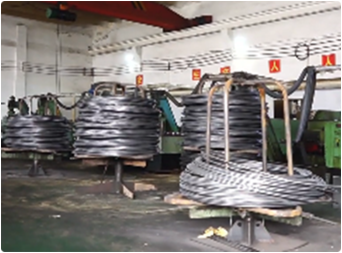Pro . 04, 2024 13:29 Back to list
Understanding the Importance and Applications of Anchor Bolts in Construction Projects
Understanding Anchor Bolts A Key Component in Structural Engineering
Anchor bolts are a critical component in the field of structural engineering, used to secure structures to their foundations. These versatile fasteners play a vital role in ensuring the stability and integrity of various constructions, from skyscrapers to bridges, and even in residential buildings. This article explores the significance, types, applications, and installation methods of anchor bolts.
What Are Anchor Bolts?
Anchor bolts are specialized fastening devices embedded in concrete or masonry. They create a connection between the structure above and the foundation below. Typically made from steel, they are designed to withstand tensile, shear, and lateral loads, providing the necessary strength to support heavy structures. Their purpose is to prevent movement caused by external forces such as wind, seismic activity, and the weight of the structure itself.
Types of Anchor Bolts
There are several types of anchor bolts available, each designed for specific applications and load requirements. The most common types include
1. L-shaped Anchor Bolts These are one of the most widely recognized forms, featuring a bend at one end. The bent end is embedded within the concrete, while the straight end projects above the surface, allowing for easy attachment of structural elements.
2. Straight Anchor Bolts These are simply long rods with a threaded or unthreaded end, which can be installed in various orientations. Their versatility makes them suitable for a wide range of anchoring tasks.
3. Epoxy Anchors These are bolts that are set into the concrete using an epoxy adhesive. This method is especially effective for applications where high resistance to shear forces is required.
4. Expansion Anchors Designed for use in concrete or masonry, these anchors expand upon installation, gripping the surrounding material tightly.
5. Sleeve Anchors These are used in hollow concrete or brick walls, featuring a sleeve that expands when the bolt is tightened, ensuring a secure fit.
Applications of Anchor Bolts
Anchor bolts find their application in various construction projects. Some common uses include
anchor bolt

- Buildings and Towers They anchor columns, beams, and walls to the foundation, ensuring stability and structural integrity.
- Bridges In bridge construction, anchor bolts help secure the supports and girders, providing the necessary resilience against environmental factors.
- Equipment and Machinery Heavy machinery in industrial settings often requires anchor bolts for secure installation, preventing movement during operation
.- Towers and Poles Structures like communication towers and utility poles use anchor bolts to resist wind and other lateral forces.
Installation of Anchor Bolts
Proper installation of anchor bolts is crucial to ensure their effectiveness. The process typically involves the following steps
1. Planning and Design Prior to installation, engineers must determine the appropriate type and size of anchor bolts based on the load requirements and environmental conditions.
2. Preparing the Foundation A concrete foundation needs to be poured with pre-drilled holes or templates to ensure the bolts are positioned correctly.
3. Setting the Bolts Once the foundation is cured, anchor bolts are inserted into the pre-prepared holes. Depending on the type, some may require adhesives or expansion mechanisms.
4. Aligning and Leveling The bolts must be aligned and leveled precisely to ensure that structural elements fit correctly during construction.
5. Securing the Connections Finally, nuts and washers are added to secure the structural components to the anchor bolts.
Conclusion
Anchor bolts are essential for the safety and longevity of various structures. Their ability to connect upper structures with their foundations directly influences a building's stability against various forces. Understanding the types, applications, and proper installation methods of anchor bolts allows engineers and builders to create safer, more durable, and resilient structures. As construction practices evolve and demand for new types of structures increases, the importance of reliable anchoring solutions remains a cornerstone of modern engineering. Whether it’s for commercial, industrial, or residential projects, the role of anchor bolts is indeed indispensable in the construction industry.


